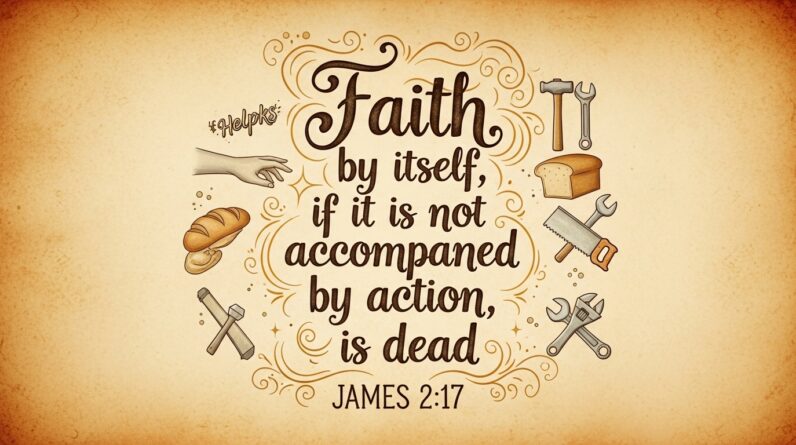Explore the transformative power of The Lord’s Prayer (Matthew 6:9-13) in deepening your spiritual journey. Discover its timeless guidance for effective, heartfelt prayer.
The Lord’s Prayer – A Model For Effective Prayer (Matthew 6:9-13)
Scripture Passage
For this discussion, we refer to Matthew 6:9-13 and if you want to delve deeper into the surrounding context, here is the passage in its entirety: Matthew 6 – Full Chapter.

Introduction
At the heart of Christian practice lies what is often called “The Lord’s Prayer.” Whether you’re new to the faith or have recited this prayer countless times, the words, “Our Father, who art in heaven,” may hold profound significance, beautifully crafted to encompass a life of faith. It’s a prayer Jesus himself used to teach his followers how to effectively communicate with God, thus providing us with an invaluable framework. Today, we’ll explore the depth of this prayer, breaking down its core components. Through this journey, you might just find yourself approaching prayer in a refreshingly new way.
So, if you’re curious to learn more or perhaps seeking a change in your spiritual routine, let’s delve into how The Lord’s Prayer can transform your personal prayer life into something remarkably effective and comforting. Click the link to Matthew 6:9-13 and let’s embark on this enlightening journey together.
Point 1: Acknowledging God’s Holiness
Key Scripture: Matthew 6:9
The opening line of the Lord’s Prayer invites you to acknowledge God’s holiness: “Our Father in heaven, hallowed be your name.” In these words, you position yourself in a posture of reverence and awe. It isn’t merely an address but a profound recognition of God’s incomparable nature. This line establishes the tone for the entire prayer, prompting you to consider not just your needs, but the majesty of the one you’re communicating with.
Explanation
To understand this, consider the cultural and historical context of Jesus’ instruction. During His time, invoking a name in this manner signified an acknowledgment of the person’s authority and power. The phrase “hallowed be your name” doesn’t only praise but also sets a foundational perspective for prayer—placing God’s glory and honor above all else.
Illustration
Imagine walking into a majestic cathedral for the first time. The towering spires, intricate stained glass, and echoes of a choir lift your gaze and spirit heavenward. In acknowledging God’s holiness, you’re stepping into that cathedral in reverence, sincerely appreciating the grandeur and sanctity of the space.
Application
In everyday terms, acknowledging God in this way encourages you to start your day with gratitude and wonder. Try this: Each time you begin to pray or even as you wake up, intentionally take a moment to reflect on what makes God holy to you. Recognize His presence – in the silent dawn, the laughter of a child, or the vast expanse of the night sky. This shift in perspective can transform how you see your day, filling it with purpose and a sense of sacred connection.
Point 2: Seeking God’s Will
Key Scripture: Matthew 6:10
“Your kingdom come Your will be done, on earth as it is in heaven.” This request forms the heart of the prayer by focusing on a desire for God’s will to be manifested in your life and the world around you. It cultivates a mindset eager to align personal intentions with divine purposes, wishing for the world to reflect heaven’s harmony.
Explanation
The line invites a radical form of discipleship where you choose to prioritize God’s agenda above your own. A genuine yearning for His kingdom to permeate through earthly chaos requires trust and surrender. To pray for God’s will is to seek His wisdom, acknowledge His timing, and express your desire to play a role in His unfolding plan.
Illustration
Consider a garden after a long winter. As spring arrives, you prepare the soil, planting seeds with hope. Your prayer for God’s kingdom to come is akin to planting those seeds, trusting in the process you don’t fully control but believe will bring beauty and life.
Application
Practically speaking, integrating this into your prayer life may mean asking, “How can I serve God’s purpose today?” Seek ways you can contribute—be it through acts of kindness, standing up for justice, or sharing your talents. Let this be a call to action, prompting you to reflect: In what aspects of your life can you allow God’s will to guide you?
Point 3: Trusting in God’s Provision
Key Scripture: Matthew 6:11
“Give us today our daily bread.” This petition underscores reliance on God for daily provision. More than just physical sustenance, it encompasses all aspects of your life’s necessities—spiritual, emotional, and relational.
Explanation
At its core, this portion of the prayer is a recognition of dependence—not only for physical nourishment but for everything essential to sustain and nurture life. The daily bread symbolizes God’s constant provision, those everyday miracles you often overlook: the peace in your heart, the strength in your body, and the community surrounding you.
Illustration
Think of a small bird collecting twigs and leaves to build its nest. Each piece may seem trivial alone, but together they form a haven. Trusting in God’s provision is like trusting that God provides you with each twig and leaf needed for the life you’re building.
Application
Reflect on the many ways God provides for you daily. Consider keeping a gratitude journal, noting specifics about how God meets your needs every day. As you acknowledge His provision, your trust becomes less about the absence of worry and more about an active choice to trust in His faithfulness.
Conclusion
To wrap up, the Lord’s Prayer is not merely a set of words but a powerful model for effective prayer—calling you to acknowledge God’s holiness, seek His will over your own, and trust in His provision. By weaving these themes into the fabric of your daily life, you enable deeper connections with God and those around you, ultimately shaping your worldview and transforming your spiritual journey.
In closing, I invite you to revisit Matthew 6:9-13 this week, reflecting on how it speaks directly to where you are right now. Allow these words to renew your prayer life and lead you into a deeper sense of peace and purpose.







